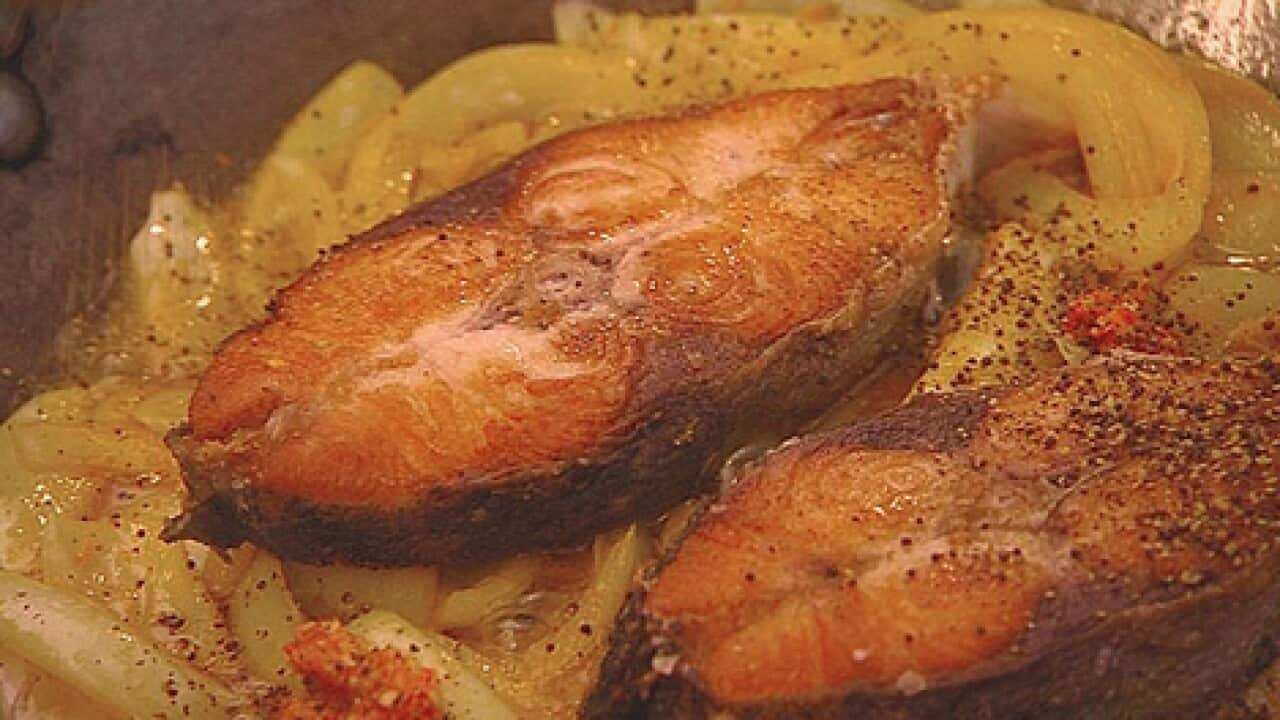“Most people know Mauritius as an island paradise off the coast of East Africa,” says , who was born there and lived in the country until he was eight.
“I think the most amazing thing about Mauritius is ," he says. "They all live there in harmony, for the most part, and respect each other. Everyone celebrates each others’ religious holidays, eats each others' food, consumes each others’ culture, lives very closely together and speaks the same language, which is a really incredible thing. Everyone speaks , and it's a really just unifying thing.”
and other first noticed the uninhabited island during the 10th century. Then came the Portuguese, the Dutch, the French, and the English, before the country became independent . Today, the majority of the population is, descendants of . The other main groups are Mauritian Creoles, Sino-Mauritians and Franco-Mauritians. Mauritian cuisine is a blend of all these cultures, with dishes like , (fried noodles), (dumplings), , (seven curries), (salted fish) and (tomato sauce).
Mauritian cuisine is a blend of all these cultures, with dishes like , (fried noodles), (dumplings), , (seven curries), (salted fish) and (tomato sauce).

Manzé's taro fritters with green chilli. Source: Manzé
Seethiah is Indo-Mauritian and spent his childhood by the beach, where he ate fish freshly caught by his dad, vegetables like okra and pumpkin leaves, and vibrant foods, like fruit seasoned with chilli salt. His grandmother is a serious home cook, spending days preparing feasts for the family. His parents followed in her path, hosting meals for other Mauritian migrants, growing their own chillies and watercress, and making sure their drawers were full of the grandma’s masala powder.
“My mum’s cooking is incredible. I can eat something that she cooked yesterday, like fried bitter melon, and have flashbacks to being a kid in Mauritius,” he says. He left Mauritius when his family relocated to New Zealand, at age eight, and the chef has been based in Australia since 2010, after moving here as a 17-year-old. While working in restaurants in Canberra and Melbourne, it was natural for Seethiah to cook his take on Mauritian dishes for staff meals, and later for a series of successful pop-ups called Manzé (which means “eat” in Mauritian Creole).
He left Mauritius when his family relocated to New Zealand, at age eight, and the chef has been based in Australia since 2010, after moving here as a 17-year-old. While working in restaurants in Canberra and Melbourne, it was natural for Seethiah to cook his take on Mauritian dishes for staff meals, and later for a series of successful pop-ups called Manzé (which means “eat” in Mauritian Creole).

Okra was an ingredient that the chef grew up with in Mauritius. Source: Jacqui Shelton
With the help of two friends, journalist and visual artist , the pop-ups have turned into the permanent version of , the country’s first Mauritian wine bar.
The 25-seater opened at the start of November, in Seethiah’s neighbourhood of North Melbourne.
I think the most amazing thing about Mauritius is the mix of people who have wound up there over history... Everyone celebrates each others’ religious holidays, eats each others' food.
“It’s a warm and inviting little space where people can have some great drinks and some really good food that they might be unfamiliar with. But also, it turns out there's a million Mauritians who live in North Melbourne, so plenty of people will be familiar with it as well, and I hope I can remind them of their childhood,” he says.
Seafood and vegetables are at the forefront of the set menu, and Seethiah concentrates on Indo-Mauritian flavours while allowing himself to borrow from other influences of the island. You can expect dishes like a potato and smoked barramundi samosa, scallops with green mango pickle and pipis with rougaille.
“Rougaille is a real mix of that sort of African and Indian cooking; like a shallot, ginger, and thyme-based sauce cooked with fresh tomatoes and lots of fresh herbs. And not cooked down, cooked just enough for the tomatoes to break down, and still be vibrant. And you can still taste the ginger and the thyme. And we grill the pipis on a fire and toss it all through,” he explains. Dessert looks like a sponge with mango and fig leaf or flan with thinly sliced pineapple and fermented pineapple juice.
Dessert looks like a sponge with mango and fig leaf or flan with thinly sliced pineapple and fermented pineapple juice.

Manzé's sponge cake, which is flavoured with mango and fig leaf. Source: Manzé
Later down the track, an à la carte menu will feature plenty of snacks (, in Mauritius). He’s thinking of including , a bread roll served with anything from pickled octopus to stir-fried chicken liver.
The chef, who sees Manzé as an extension of his home, wants the restaurant to be a diverse and inclusive workplace, and is trying to minimise its environmental footprint. He’s working with start-up to connect directly with local fishermen embracing sustainable fishing, and is hoping to eventually have a plot of land to grow vegetables.
The wine program by (editor of wine magazine ) is “equal parts approachable and interesting”, with a focus on natural-leaning wines made sustainably by female winemakers and winemakers of colour.
Given how quickly Melburnians are making bookings for the bar, it looks like they’re very excited about Manzé’s ethos and menu.
2/1 Errol Street, North Melbourne
Wed – Sat 5:30 pm – 11 pm








